What drives customers to make a purchase?
We’re not talking about the item in question necessarily, but rather what are the buying motivators that convinces shoppers to enter their credit card number and hit submit order?
Since we can’t read our customer’s minds, we’ll have to resort to the next best thing. What if there was a way to figure out why they make a purchase, so you optimize your selling strategy and make more customers happy?
Buying motivators help brands and retailers understand what prompts customers to purchase in the first place. Once you understand these nuances, it changes the way you sell to your customers for the better—both at the present moment and in the future.
In fact, Sirus Decisions found 67% of the buyer’s journey takes place digitally. That’s why it’s more important than ever to understand your customers’ shopping behaviors and why they make their purchasing decisions.
In this post, we’re taking a closer look at what buyer motivations are to marketers and how you leverage them to increase revenue and sell with more intent:
What Are Buying Motivators?
Buying motivators are the reassurances that encourages customers to go through with a purchase. The root of buying motivators varies from shopper to shopper, but these factors help segment customers based on where they are in the purchase journey. Let’s take a look at the buying process from start to finish:
Step 1: Awareness
Every aspect of the buyer journey can be traced back to this initial stage—or when a customer becomes aware of a want, a need or a problem. This recognition could be either internally or externally motivated.
For example, your customer is going on a backpacking trip and realizes there is a hole in their backpack. The customer thinks, time for a new bag and begins their search.
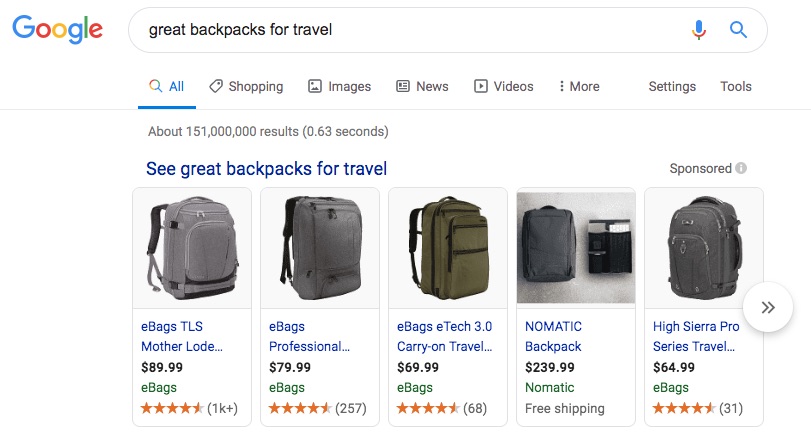
- Pro Tip: Make sure your reviews SEO is set up correctly so you’re not only ranking on search more effectively, but also for more terms through unique, well-written product descriptions.
Step 2: Consideration
Once a buyer realizes they need to fulfill a want, need or problem, they research products to meet that need, want or problem. Gathering information about options, reading product reviews, watching demo videos and checking out user-generated content is a critical part of this stage.
At this point, the customer will likely also ask for opinions or feedback from people they trust. This might be someone who has previously purchased the product or an similar item. In fact, Nielsen discovered that 92% of people trust the recommendations of close friends and family over any other type of advertising.
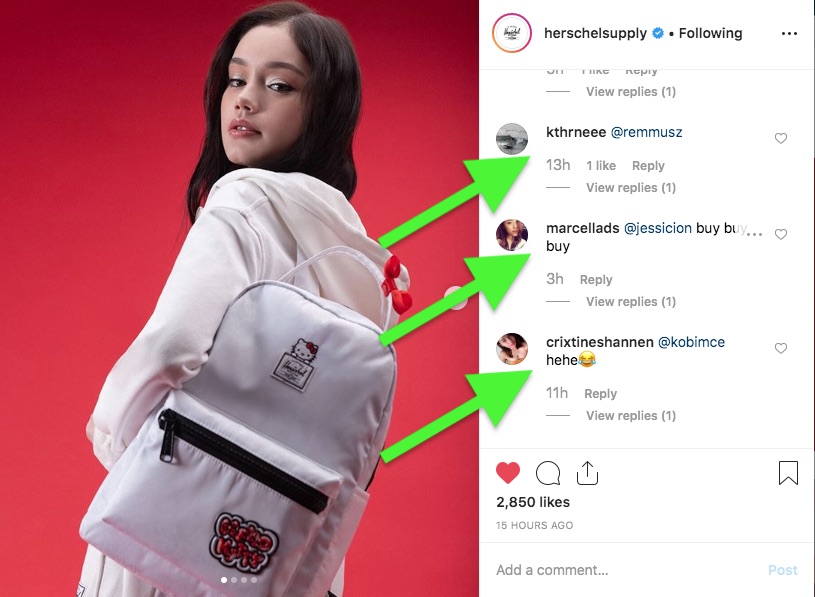
- Pro Tip: Use Instagram to market visuals of new products and ask users to tag a friend who needs it. This helps build awareness through your brand advocates without spending a ton on social media ads.
Step 3: Decision
Finally, the buyer is inclined to make a choice regarding the product per that core want, need or problem from the awareness stage.
At this point, your backpacking customer has identified the backpack they want to purchase over another based on a variety of factors. The customer feels as though they have reached a decision in their shopping journey and can buy with confidence.
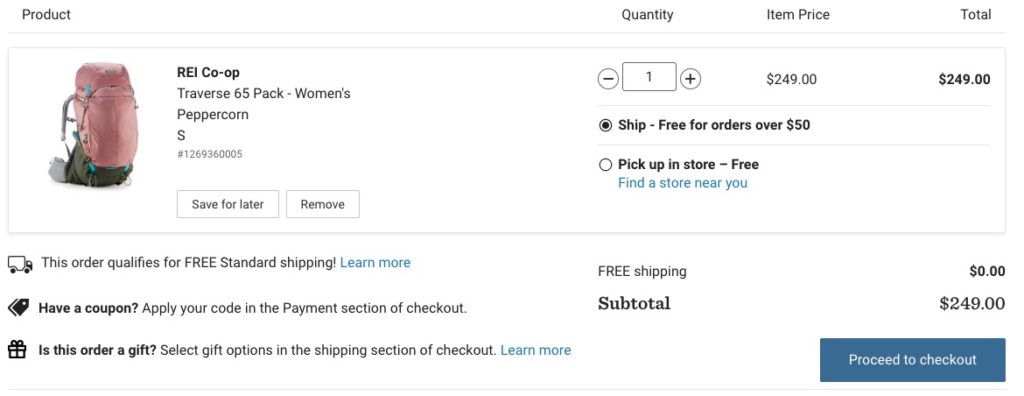
But hold on, how did they reach that choice?
What occurred between the consideration and decision stage to move them towards making a purchase?
Customer motivation is categorized by what psychologists like to call intrinsic or extrinsic motivation. Intrinsic motivation is what drives us to make decisions based on our wants or needs. But extrinsic motivation is—you guessed it—the external factors that drive us to make decisions.
In the case of our backpacking customer, their motivations for shopping for a new backpack is likely a bit of both intrinsic and extrinsic motivation. The customer wants to be prepared for the trip, but they may also feel the need to have the latest gear due to influence from an ad or a personal recommendation.
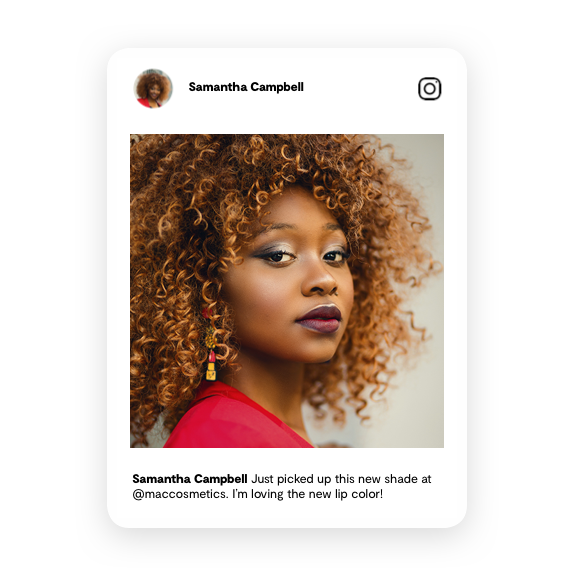
- Pro Tip: Give your shoppers user-generated content on your product pages to further push them to make a purchase by seeing real-life examples of the items with normal, everyday people. PowerReviews Social Collection is perfect for brands wanting to highlight their amazing user-generated content, and at the same time, increase conversion.
Understanding Customer Motivation From a Psychological Perspective
We know that internal and external motivation are two components of what drive customers to make purchases. But these buying motivators aren’t as black and white as it may seem.
For example, if you had customers A, B and C, all three could be looking to buy new shoes, but each person might have very different buying motivators behind their search.
Another school of thought designed to help brands understand buyer motivation is the VALS Framework. This framework segments customers into eight types based on psychological and demographical factors that determine their shopping behavior.
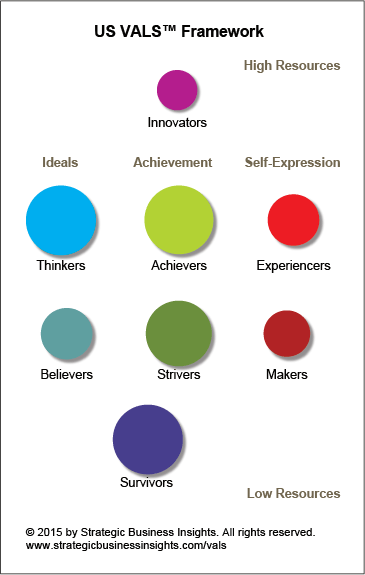
The VALS Framework also considers primary motivation (the anticipated behavior of a customer) and resources (factors like impulsiveness, leadership and vanity) when evaluating consumer behavior. Together they reveal how a customer will navigate the market as a consumer.
So what does all that mean?
Segmenting customers using a psychologically-backed method like the VALS Framework helps make sense of your customers’ behavior. This also helps you determine what products they may be interested in based on their motivations.
Rendering Intent Into Action
We know how to determine the core of buyer motivation, but what about the customer experience with your brand? Your customer experience—whether it be on your website, on social media or through other content—is critical.
But don’t just take our word for it.
A study from Dimension Data found 84% of organizations who improved their customer experience saw an increase in revenue. What’s more, a study from Walker discovered that by 2020, customer experience would surpass price and product as key brand differentiators.
Let’s take a deep dive into what pushes customers down the buyer journey.
User Experience
The user experience (UX) pertains to how customers navigate your site. But just how important is it to the overall customer journey?
A report from Magnetic North found that 1 in 3 customers will abandon a purchase because they can’t find the information they need. In other words, you could be leaving money on the table by not investing in your site’s user experience.
So where do you start?
Your customers’ motivation should drive the user experience. For example, if you’re a shoe retailer and a potential customer looks for a pair of shoes to wear in his or her commute, they’ll probably care more about durability and style instead of color.
Providing customers with search filters allowing them to narrow down options is a great way to accommodate every purchase intent. This way customers searching for sturdy work shoes can find what they want faster.
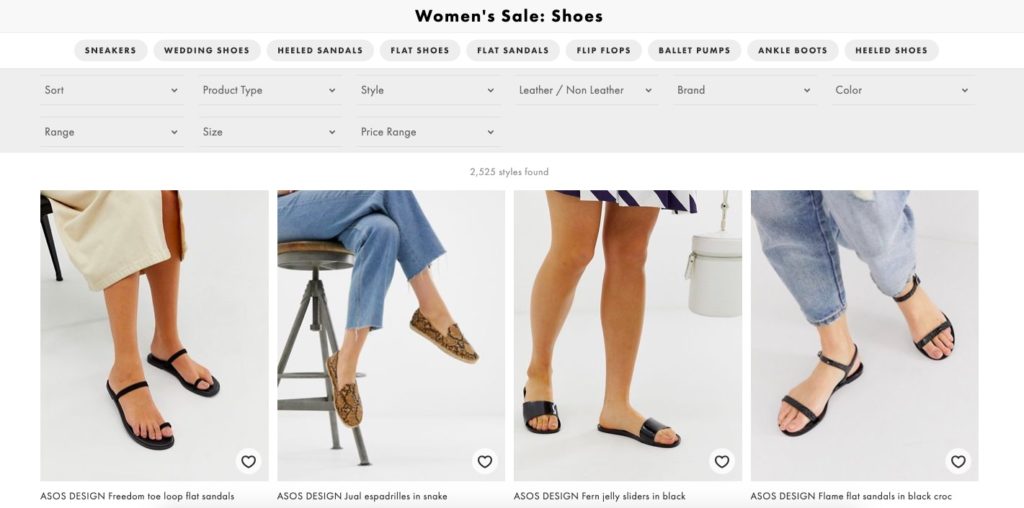
ASOS, a global fashion retailer, has a great search function that makes finding that perfect pair a breeze.
Social Proof
Did you know that 90% of online shoppers research products through search engines or reviews? Also, the average retailer experiences a 20% reduction in returns for items with ratings and reviews.
What does this tell us? Social proof is a crucial component of your customer journey. Customer reviews, case studies and star ratings are a great way to build transparency and create stronger product pages.
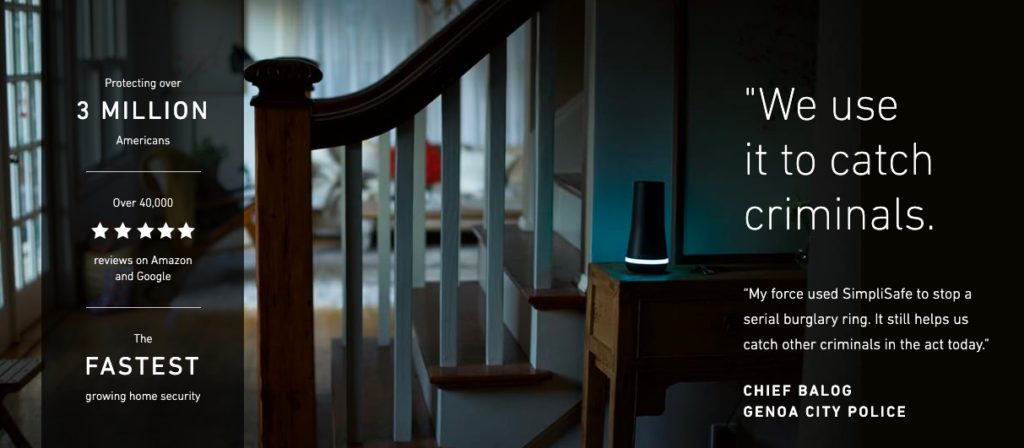
SimpliSafe does a great job highlighting their social proof by using a combination of trigger words like “fastest” and “catch criminals” and visuals like a five-star review. Together, this social proof reinforces SimpliSafe’s claim to provide the best home security service on the market.
Supplemental Content
Adding content that isn’t directly shouting, “buy me!” to every customer is essential to their purchase journey. Value-packed blog posts, videos, product demos and anything else customers could benefit from helps you build trust. At the same time, it also shows customers that you want to provide them with value.
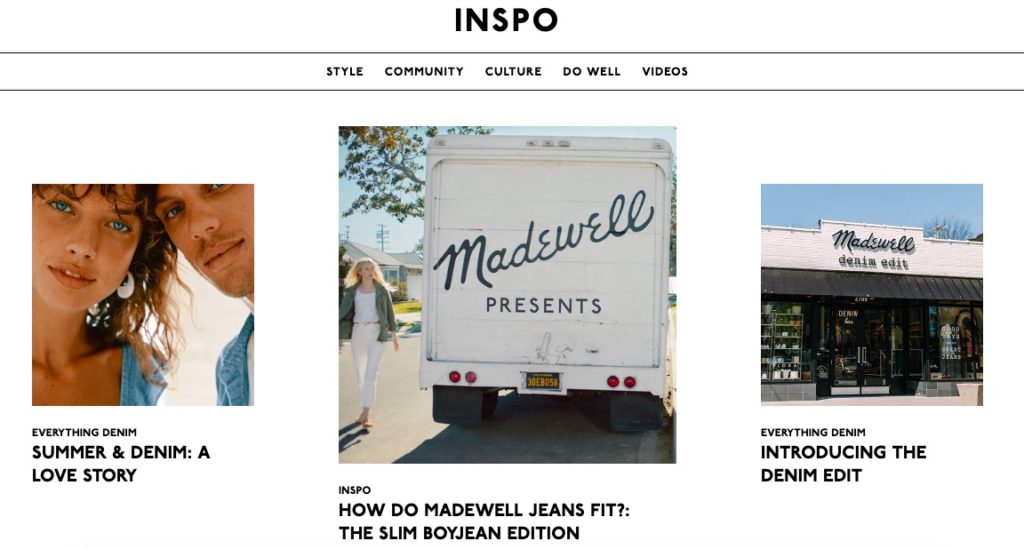
Madewell’s blog serves as an excellent hub of supplemental content to their products. Fans of the clothing retailer can find inspiration as well as more information related to the brand and products they love, all in one place.
Visuals
High-quality imagery—both branded and product—plays a significant role in the consumer buying process. A survey from Weebly found that 75% of ecommerce shoppers feel that product photos are “very influential” when deciding on making an online purchase.
Imagery helps customers get a complete understanding of your products and what they can expect if they make a purchase. This is especially important when shopping online because customers can’t physically hold products or try them on before buying.
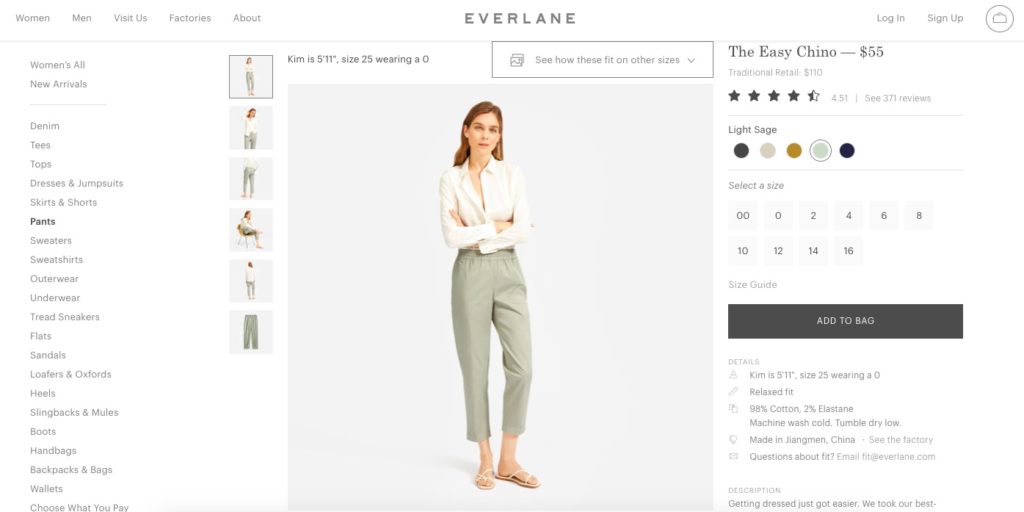
Minimalist clothing retailer, Everlane, has excellent product imagery. Not only does the brand include high-quality photos of the product, but customers can see how each item fits on the model in multiple views (both standing and sitting), which adds a layer of depth to the shopping experience.
PowerReviews Review Snapshot is perfect for brands wanting to highlight every aspect of their product–from size and fit to the most common pros and cons within the reviews of the product.
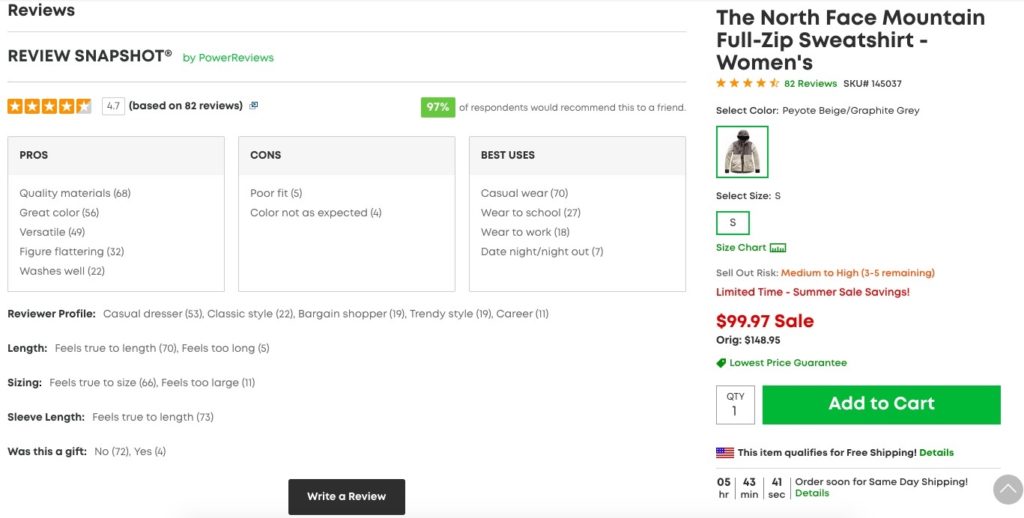
Not only can you add things like sizing, best uses and much more within Review Snapshot, but brands can also tailor to have as much or as little information for customers as possible. Contact our team today to see demo and how our solutions work for some of the world’s largest brands and retailers!
User Interface
Similar to user experience, user interface (UI) describes the psychological elements of decision making during the buying process. Components like color, font, buttons and icons impact the overall look and feel of your site.
Your customers buying motivators should determine the message you want to convey with these elements.
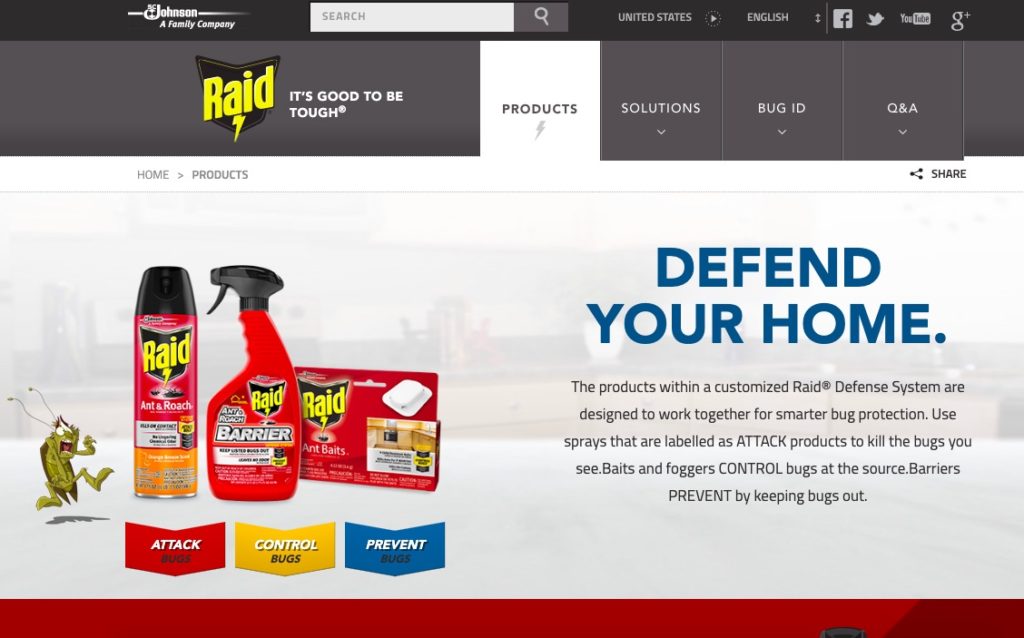
If you’re selling bug repellent products, like Raid, to customers who want to get rid of an existing bug problem, it’s crucial to communicate the effectiveness of your products through your branding. Keywords like “barrier,” “attack” and “control” with bold typefaces and colors reinforce the message that your products get the job done.
Understanding Buyer Motivation Means Smarter Selling
By grasping the motivators of your customers, you have the chance to:
- Provide shoppers with information needed at the specific stage of the buyer journey.
- Turn insights into action and optimize your site.
- Increase online sales and boost your bottom line.
If you know the root of your customers’ buying motivators, you can focus on the tactics that yield the best results. Gain more actionable customer insights with PowerReviews. Contact us today to connect with a member of our team!





